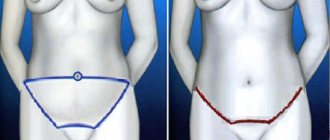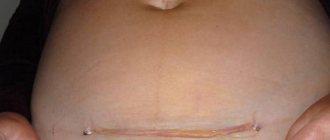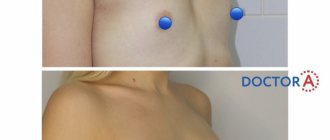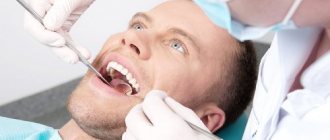Unfortunately, pregnancy and childbirth affect not only the figure of the young mother. Almost every woman during this period faces one or another problem in the intimate area, so postpartum recovery is required not only for the body and skin, but also for the intimate area, which is so necessary for a full family life and a sense of harmony and happiness.
Don't take these problems as a "forced price" for the joys of motherhood. The lack of intimate comfort and the breakdown of sexual relationships often leads to mutual dissatisfaction, reproaches, cooling down, even to the point of cessation of sexual contacts, and this clearly does not contribute to strengthening the marriage.
What problems do women most often face after childbirth? The main ones are the following:
- pain during sexual intercourse, as well as dryness, itching, burning in the vaginal area, in the flesh to the point that sexual life after childbirth becomes impossible;
- the appearance of frequently recurring inflammatory processes in the vaginal area, recurrent herpes;
- decreased libido (sexual desire);
- decreased sensations during sexual intercourse, both in women and men;
- symptoms of a “wide” vagina (feeling of air entering during sexual intercourse, decreased sensation, gaping of the genital slit);
- scars of the perineum and vagina after ruptures during childbirth, as well as post-traumatic asymmetry in the vagina and labia;
- prolapse of the vaginal walls;
- urinary incontinence;
- sagging skin of the labia;
- increase in the size of the labia minora;
- increased pigmentation (darkening) of the intimate area.
Is it necessary to determine the size and volume of the vagina and why?
This is faced by some women who have returned to normal sex life after childbirth.
Often they may notice that sexual intercourse does not bring pleasure due to the lack of proper friction with the partner's penis. There is a feeling of complete discrepancy between what happened before and the current reality with the same man. This is due to an increase in the size of the vaginal opening, which is stretched during childbirth and should shrink over time, but in some cases this does not happen due to injury. In this state of affairs, a woman cannot achieve orgasm. To put it simply, if we do not approach the problem as a purely medical one, but take the woman’s place, vaginal enlargement after childbirth is the situation when you cease to feel the man’s sexual organ inside you and, accordingly, receive the same sensations.
How to determine normal vaginal size?
The size of the vagina does not have specific measurements and is not determined by doctors according to special criteria. Most often, gynecologists use terms such as capacious and laboring vagina to define this parameter. If the organs come out, then only in this case do they talk about prolapse. In scientific publications you can find such a concept as “failure of the pelvic floor muscles” without prolapse. This means that the muscle structures have stretched, torn and, to top it all, have lost their elasticity, but the walls of the vagina have not yet moved from their places.
Labiaplasty
The labia minora suffer during childbirth more often than the labia majora. These tissues undergo significant stretching, which then causes them to increase in size and sag. A woman begins to experience discomfort during sex, wearing tight underwear, and riding a bicycle. Aesthetic defects (such as asymmetry or uneven edges) are also indications for surgery.
Correction of the size of the labia minora is carried out by resection of part of the tissue. In this case, the anatomical structure remains unchanged. Many women report that getting rid of excess tissue has helped make the area more sensitive.
Less commonly, correction is performed by enlarging the labia majora. As a rule, this operation is resorted to due to the loss of volume and tone.
Anatomy of the vagina after childbirth
To judge the size of the vagina and the need to reduce it, you need to know at least approximately the structure of this organ. It is a tubular formation that connects the cervix and the entrance. Only at the entrance the vagina is limited, and then it is very elastic and stretchable. If desired, you can reach with your finger to the pubis from the anus, through the bladder and on the sides to the pelvic bones, regardless of whether there was childbirth or not.
Only at the entrance there are muscle formations that limit the vagina 6-8 cm from its beginning. These are the pelvic floor muscles responsible for the elasticity of the ring, which determines the force of friction, compression and density during sex. During childbirth, it is these muscles that can be damaged.
It is important to understand that these structures seem to be specially created specifically for sex, but during childbirth they become an obstacle, since due to their poor extensibility they interfere with the child’s movement outward. The rest of the vagina is useless in sexual life, that is, it does not formally participate in it. It is important to restore the muscle ring and the problems will go away. The vaginal wall itself is also sewn, but only for the length of the defect.
Arteriovenous compression
- Aorto-mesenteric compression of the left renal vein
Aorto-mesenteric compression of the left renal vein (aorto-mesenteric “tweezers”, nutcracker syndrome, mesoaortic compression syndrome of the left renal vein) is a situation in which the left renal vein is compressed between the aorta and the superior mesenteric artery. This leads to disturbances in the outflow of blood in the left renal vein, expansion and formation of “reverse” blood flow through the left gonadal vein with the formation of symptoms of varicose veins of the female genital organs.
- May-Turner syndrome
May-Turner syndrome is a situation in which the left common iliac vein is compressed by the right common iliac artery, leading to expansion of the common iliac vein below the site of compression and overflow of the pelvic vessels with venous blood. We also often observe the development of varicose veins - expansion of the left lower limb, the formation of persistent swelling of the soft tissues of the left lower limb and even trophic disorders (pigmentation). Most often, with May-Turner syndrome, varicose veins on the outer labia develop during pregnancy and remain forever after pregnancy (photo).
- Postthrombotic disease
Quite often one can observe the development of pelvic varicose veins in patients who have previously suffered deep vein thrombosis (especially proximal thrombosis) when there is a residual narrowing of the lumen or complete occlusion of the lumen of the common iliac vein. In this case, the outflow of blood from the pelvic organs is sharply hampered and, as a consequence, the expansion of the lumen of blood vessels and the development of pelvic varicose veins.
- Venous dysplasia
This is a malformation of the superficial or deep veins that occurs in the early phases of the formation of the vascular system of the embryo in the period from 4 to 8 weeks of intrauterine development. Venous dysplasia leads to the appearance of varicose veins of the minor lips. The diagnosis of dysplasia can be established provided that other causes of dilation of the genital vessels are excluded. Dysplasias look like dense vascular spots that are difficult to empty when squeezed. They resemble tumor-like formations more than dilated varicose veins.
Symptoms of muscle damage after childbirth
When the pelvic floor muscles prolapse, rupture and stretch, water flows into the vagina when swimming in the sea or pool, and during sexual intercourse, unpleasant sounds are heard due to the escaping air. Sex becomes less vibrant. Involuntary leakage of urine may also occur. Thrush and bacterial vaginosis without an infectious agent are often a concern.
How to check for muscle damage yourself at home?
This problem can be identified visually. Externally, the injury is diagnosed in a lying position, when the genital slit gapes and the mucous membrane protrudes outward, especially if you strain the abdominal muscles, that is, “strain.”
Doctors have standard tests. While lying down on a gynecological chair, or just at home on the bed, you need to insert a finger into the vagina and press towards the anus, that is, on the back wall. If the finger seems to fall down, this indicates muscle destruction. When everything is in order, when pressed, it rests against an elastic barrier. You can also try squeezing your finger with your vaginal muscles and holding it for about two seconds. Normally, any woman should do this.
Symptoms and complaints of perineal varicose veins
In the classic version, there is a triad of symptoms:
- Pelvic pain.
- Varicose veins of the labia and perineum.
- Dysmenorrhea is a cyclical process, when during menstruation severe pain in the lower abdomen, heavy menstrual bleeding, and menstrual irregularities may appear.
- With a long course of the disease, the development of dyspareunia is possible - painful sensations in the lower abdomen that occur during or after sexual intercourse. A peculiarity of this symptom is the persistence of pain for at least 30 minutes and up to a day after sexual intercourse.
Non-surgical ways to fix the problem
It is not necessary to treat injuries to the pelvic floor muscles surgically, since in situations where they are not torn, but, for example, stretched, Kegel exercises will help. They involve training the vaginal muscles. Today this is the only non-surgical “honest” method. It doesn’t matter in what marketing expensive or cheap modification, from simple compressions and relaxations while lying in front of the TV to wumbling with a trainer, or fashionable vaginal simulators. They are all approximately equally effective, but only when significant parts of the muscles remain and they can be made to work, compensating for the absence of others. This is especially good for women who are professionally involved in sports, even in the past.
These workouts will only help if they are not torn and work. Most often, this improves the situation to one degree or another, but if the defects are serious, this is a useless exercise. You can consider them as a kind of test. We do 3 months, then either surgery to reduce the vagina, or we live as is.
We all want to believe in miracles, but marketing is designed to create them and sell them to us, it just so happens. Folk methods and outright not entirely medical business are also intended to help with this problem. Hyaluronic acid injected there, in the sense of the vagina itself, and similar measures, if they help, will be more psychological, but there will not be much harm. After injection, the substance creates a very low cushion at the entrance to the vagina. The problem is that, of course, this is not enough for a clear improvement, but the main advantage is the absence of harm, and, in principle, the properties of the drug include improved tissue properties.
You will always have to do this, repeat it every 3 months. This is not a method for reducing vaginal size without surgery, but in principle, if you believe it, then good luck!
The ultra-modern ER YAG or erbium laser was invented, like hyaluronic acid for skin problems, but again for some reason it is also used in the vagina. The peculiarity of this equipment is the radiation wavelength, which is in the range between therapeutic and surgical.
The point is to create a certain effect that does not seem to burn, but at the same time causes certain changes in the cells of the vaginal mucosa, destroying them, and this, according to the sellers of the device, makes it smaller in size. It’s probably not really necessary to read the marketing delights of those who sell the service; it’s better to just study the properties of these types of lasers from medical sources.
Treatment of vaginal injuries
If any kind of mechanical damage to the vaginal walls occurs, you should consult a gynecologist. The doctor will conduct an examination on a chair (finger and with mirrors) and assess the nature of the microdamages. If the injuries were sustained as a result of dysbacteriosis or an STD, the gynecologist will also take samples of biomaterials for laboratory tests.
How to treat the disease?
Treatment depends on the nature of the injury. If it is small, usually such microdamage goes away on its own, provided that the provoking factor is eliminated. If we are talking about more serious violations of the integrity of the mucous membrane, drug treatment will be required. It usually consists of prescribing antibacterial drugs (for STDs), antifungal agents (for candidiasis), combined oral contraceptives (for hormonal imbalances) and intimate lubricants (for vaginal dryness), as well as vascular strengthening drugs and vitamin complexes. If ruptures occur, sutures will be required.
Please note: during treatment you must abstain from intimacy.
The body's natural defenses are tested daily. Hormonal changes, taking medications, and even seemingly harmless habits (wearing tight and synthetic underwear, constant use of daily sanitary pads and tampons) negatively affect the vaginal microflora, contribute to the occurrence of microdamages and the growth of pathogenic bacteria.
Changing your underwear every day will help.
Why is laser useless for vaginal reduction?
The reduction effect will be to some extent, but due to wrinkling and changes similar to burns, and it is easy to understand how much this will change the sensitivity, because the sensitive endings will also be affected.
And it will not be possible to significantly limit the size if we remember that the vaginal tube itself during childbirth, for example, stretches to the size of the fetal head. Still, it is necessary to understand that the mucous membrane has absolutely nothing to do with it.
The size of the vagina is determined by the muscles of the pelvic floor that limit it, this is the red jumper in the picture, therefore all efforts should be directed to them, and not to other tissues. Postpartum enlargement and the main problems are still primarily associated with their ruptures and sprains.
Only at the entrance is the vaginal tube limited by muscles, the rest of it is freely extensible and during sex it never fits around the penis, it simply touches various walls during movements.
That is why only the impact of a laser or anything else on the mucous membrane in order to eliminate the main complaints that women address in the postpartum period is doomed to failure. Fraud or good?
Any non-surgical methods of vaginal reduction are better than surgery. In the sense that they are safe and less traumatic. The main question is their effectiveness, because in cosmetology, conservative methods of improving the condition of the skin of the face and body help only in certain situations. In cases where this is useless and the cosmetologist sees that he can no longer offer the patient anything, they resort to plastic surgery. It’s like with the face, first creams, massages, Botox, hyaluronic acid, and when all this doesn’t help, or the situation is deplorable from the very beginning, then a circular lift.
Also, if a woman is not ready to immediately undergo surgery, it is permissible to start with non-surgical methods of correction, even realizing that they will not bring any improvement. But if they are ineffective, we recommend surgery.
However, the doctor must explain to patients in advance how much conservative measures will help in solving their problems, be it laser or injections with hyaluronic acid, Botox or Ristylane.
It is up to the woman herself to decide what to do, whether to have surgery right away or try possibly useless and quite expensive procedures. If the muscles are torn, there is prolapse, and you are told that all of the above will help you and there are no other options, then this is dishonest and is called fraud. But if everything is explained, and the patient understands everything and wants to try it herself, then everything is fine! Laser, as an additional procedure, can be implemented at the woman’s request, especially taking into account its safety. The device is actually good, it removes scars and wrinkles perfectly, but it is simply not intended for postpartum vaginal reconstruction.
Here's how, for example, its supporters describe its action, this is an excerpt from an advertising brochure:
“The presence of a laser in the arsenal, undoubtedly, enhances the image of the clinic and the doctor, attracting even the most “fearful” patients to treatment. Its use allows the patient to realize the fact that he is receiving the most effective and high-quality treatment at the modern level.”
The purpose of the action is to create a damaging effect on the vaginal mucosa, similar to a mild burn. As a result, the vaginal tube shrinks and loses its elasticity, and the sensitive endings and some glands are destroyed. That is, the effect on tissue is the opposite of hyaluronic acid.
In this case, the vagina can of course be significantly reduced, for example, often with radiation anti-cancer therapy, a similar burn occurs, scar deformation and, as a result, sexual life may become impossible. So the question of using this type of energy in the sexual sphere is questionable for women who actively want to continue having sex. Read medical sources, choose what to do based on common sense, as a rule, this helps!
How much does vaginal plastic surgery (vaginoplasty) cost?
| Name | Price |
| Plastic surgery of the anterior vaginal wall, category 1 | 60,000 rub. |
| Plastic surgery of the anterior vaginal wall, category 2 | 65,000 rub. |
Female intimate surgery is a field in which aesthetics is closely related to the physiology and reproductive system of a girl. That is why you should be extremely careful when choosing a vaginoplasty specialist. When choosing a surgeon to perform vaginoplasty, you need to make sure that this operation is one of the priorities in his practice. In Moscow, many specialists perform intimate plastic surgery, but it is one thing when a doctor can, in principle, perform an operation, and quite another when a surgeon specializes in performing it and performs it regularly, sometimes even daily.
Sarvar Bakirkhanov comments: “A competent surgeon operates a lot and often - not occasionally, but literally every day.”
Our clinic uses modern equipment and high-quality materials to perform vaginoplasty. Operations are carried out in an operating room equipped with the latest technology, taking into account all the requirements of international standards.
The surgeons of our clinic are among the best specialists in the field of intimate surgery and operative gynecology. Doctors have more than 20 years of experience and regularly perform intimate surgeries, including vaginoplasty. By contacting our specialists, you can be sure that the result of vaginoplasty will meet and even exceed your expectations.
- We guarantee complete transparency of the surgeon’s work at all stages of the operation:
- At the initial consultation, the surgeon will tell you a detailed surgical plan;
- Will give recommendations during the rehabilitation period;
- Will ensure full achievement of the expected result.
Vaginoplasty is a complex operation and cannot be cheap. Surgery is not a lottery; you shouldn’t hope for luck here; it’s better to immediately trust a reliable specialist who guarantees high-quality vaginoplasty.
Where to contact?
If you think that you still need surgery to restore the structure of the vaginal muscles after childbirth, then first of all you can go to a gynecologist for an examination. This is what we’ll call a primary test, that is, if the doctor says that everything is fine, but there are complaints, then you have pelvic floor muscle insufficiency or mild, first-degree prolapse. In cases where even the local gynecologist says there is a problem, we can safely talk about the second or third stage of prolapse.
Next, it is better to visit a specialist who has some experience in intimate surgery. This is important, because only then together can you identify the problem and ways to resolve it, and not receive a “fine” reply.
Then it is important to decide where to perform the operation, since during the intervention it is possible not to finish the stitching or to alter it. Vaginoplasty can be done in regular hospitals, where there are gynecologists and specialists who work specifically in pelvic surgery, but you need to know who to go to. There are also specialized clinics and centers where these operations are “put on stream”; this will significantly reduce the risks of complications and perform the operation so that after the intervention it is not too crowded or wide.
Kinds
The selection of a specific operation for the restoration of intimate areas is selected during an in-person consultation by an aesthetic plastic surgeon. In general, all surgical interventions can be divided into three groups:
- colpoplasty (vaginal surgery);
- perineoplasty (reconstruction of the perineum);
- labiaplasty (correction of the shape of the labia minora or majora).
Often, the doctor combines several types of interventions, and also performs joint operations with a cosmetologist to achieve maximum results.
How is the operation performed?
By itself, it does not take more than an hour and is not considered difficult for experienced doctors. After staying in the hospital for only three hours, you can return home. General anesthesia is needed so that the patient sleeps and does not feel pain. Thanks to modern drugs, such pain relief does not affect the functioning of the brain and other important organs.
Within forty minutes the woman comes to her senses, as the drug is completely eliminated from the body.
Before surgery, you need to take some tests: sometimes a gynecological smear, a general blood test, a blood test for sexually transmitted diseases and hepatitis, and an ECG. The patient's blood clotting is also checked. After the operation, the patient should lie down more during the day, move less and not lift anything heavy at all. The gentle regime lasts about three days.
If the operation was complex and long, then the woman may stay in the clinic for some time.
The only extremely serious disadvantage of vaginoplasty is that after it you cannot sit down for about three to four weeks. Even taking into account the fact that the external surgical wound quickly heals, a woman should not take a sitting position, since the sutures on the muscles can come apart at any time. This is due to the fact that, unfortunately, they completely grow together only after this period has passed. However, the problem is easily solved; there are special “orthopedic circles” on which you can sit without restrictions, even while driving and, for example, on an airplane.
Vaginoplasty - complications
Despite the complexity of the operation, the main advantage of vaginoplasty is the relatively quick recovery and painless rehabilitation process. If vaginal plastic surgery is performed by an experienced plastic surgeon and you follow all the doctor’s instructions, there should be no complications after the operation.
After the operation, the woman remains in the clinic under the supervision of a doctor for up to two days. After discharge from the hospital, you can return to your daily activities, while dosing physical activity. Provided all rules are followed after vaginal plastic surgery, unpleasant consequences are excluded.
Sarvar Bakirkhanov comments: “The most important thing in such operations is the correctly chosen day of the operation, since the postoperative period is also important along with the operation. Therefore, when planning an operation, you need to be prepared to strictly adhere to restrictions on physical activity, sitting for 7 days and heavy lifting. It is necessary to exclude efforts and some foods from the diet. In other words, you need to find a moment in life when a woman can lead a safe lifestyle, enlist the support of loved ones, while in everyday life activity is not limited, the patient can lead a home life as before.”
Perineoplasty classic
Perineal plastic surgery is performed for severe ruptures of the tendon center and cicatricial deformities of the perineum. When a perineal rupture and rectocele (prolapse of the posterior wall of the vagina and rectum) are combined, perineoplasty is combined with posterior colporrhaphy and sphincteroplasty. I wrote in detail about prolapse of the walls of the vagina and pelvic organs in this article.
During perineal plastic surgery, skin scars are excised, tissue is prepared layer-by-layer, and damaged structures of the pelvic diaphragm are restored (Fig. 7)
Rice. 7.
Stages of perineal plastic surgery
Expected results:
- Restoration of function - restoration of normal anatomy leads to normalization of the function of the perineal muscles.
- Cosmetic effect – restoration of the aesthetic attractiveness of the intimate area, narrowing of the vagina.
Back to contents
Minimally invasive perineoplasty
Another name for the operation is pernieovaginal lifting, which is performed for minor ruptures of the tendon center of the perineum and stretching of the superficial muscles of the pelvic diaphragm (transverse muscle and sphincter of the vagina). Minimally invasiveness is achieved using specially designed long-absorbable threads. The threads are passed in a special way through the muscles, through small incisions in the skin (3-5 mm), and fixed to the tendon center of the perineum. Over time, connective tissue forms in place of the threads and continues to maintain the normal anatomy of the pelvic floor.
As a preventive and therapeutic measure, minimally invasive perineoplasty with vaginal threads can be performed under local anesthesia on an outpatient basis as early as 2 months after birth (the end of the late postpartum period). The advantages of vaginal thread plastic surgery are the possibility of vaginal delivery and a short recovery period. The surgical technique is clearly presented in the following video.
Expected results
- Restoring the normal anatomy of the perineum leads to normalization of the function of the pelvic organs;
- Cosmetic and aesthetic effect - attractiveness of the intimate area;
- Improving the quality of sexual life.
Back to contents
Microtrauma of the vaginal mucosa, video
is not responsible for the accuracy of the information presented in this video clip.
Source - KVD - dermatovenerological dispensary Sources:
- GENITAL INJURIES. Merritt Diane F. // Reproductive health of children and adolescents. – 2016. – No. 1. – P. 64-80.
- DRUGS FOR VAGINAL USE FOR PREVENTION AND TREATMENT OF DISORDERS OF THE FEMALE UROGENITAL ECOSYSTEM. Ayupova G.V., Fedotova A.A., Bondarenko K.R., Mavzyutov A.R., Ishemgulov A.M., Shikova Yu.V., Batyrova E.D., Petrova V.V. // News of the Samara Scientific Center of the Russian Academy of Sciences. – 2012. – No. 5 (2). – pp. 315-319.
- MANAGEMENT OF THE POSTPARTUM PERIOD IN PURTHER WOMEN WITH SOFT TISSUE INJURIES OF THE BIRTH CHANNEL. SELIKHOVA M.S., BELAN E.B., KOTOVSKAYA M.V., EFREMOVA E.B. // MEDICINE BULLETIN, Volgograd Medical Chamber. – 2012. – Volume 6, issue 8 (48). – P.7-10.
- Microbiocenosis of the vagina of modern practically healthy women of young reproductive age. V.S. Orlova, Yu.I. Naberezhnev, I.V. Budnik // Scientific bulletins. - 2008. - No. 6 (46). — P. 27-35.
- Complex therapy of bacterial vaginosis. F.F. Badretdinova, M.A. Akhmetgalieva, M.A. Nurtdinov // Medical Bulletin of Bashkortostan. - 2008. - T. 3, No. 2. P. 28-31.
- Bacterial vaginosis: clinical features, diagnosis and treatment. A.S. Ankirskaya, V.N. Prilepskaya, G.R. Bayramova and others // Russian Medical Journal. 1998. - No. 6 (5). — pp. 276-282.
- https://www.verywellhealth.com/vaginal-dryness-causes-and-treatments-3522435
- https://www.uptodate.com/contents/vaginal-dryness-beyond-the-basics?source=see_link
- https://medlineplus.gov/ency/article/000892.htm
- https://www.omicsonline.org/open-access/the-extent-of-incurred-pelvic-floor-damage-during-a-vaginal-…










